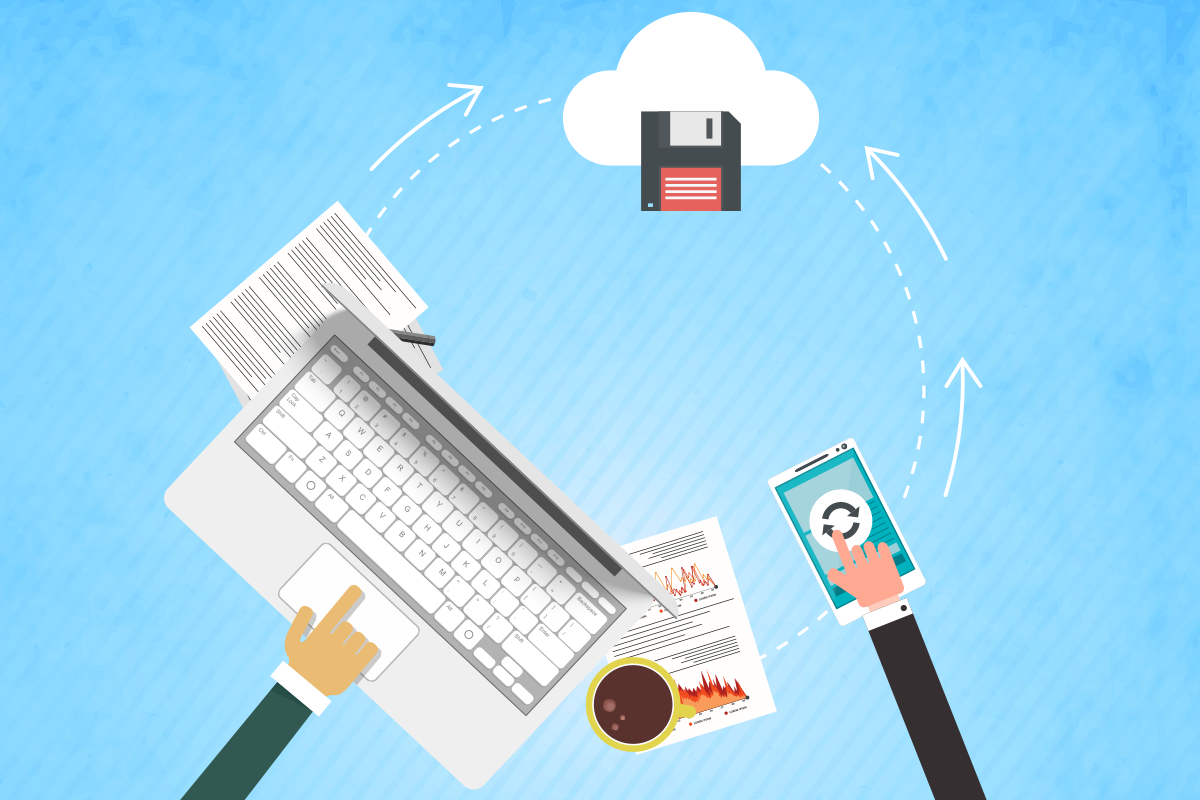The Coronavirus pandemic is changing our lives in new ways every day, but it doesn’t have to mean the end of business productivity. Many countries are mandating that companies send their employees home. Working remotely can be a big transition not only for employees but the business too. The good news is that there’s lots of technology available to support and secure work at home. With the right solutions you can go about business as usual from home, even in the midst of a global quarantine!
With the Coronavirus now labelled a global pandemic, businesses worldwide are scrambling to put safety first. Many businesses are gearing up to allow employees to work from home, others are requiring it. Whether the company wants to be moving to remote work or not, business continuity is paramount.
Some initiatives can be put on hold and projects postponed, but others are mission critical and must continue. How will your employees handle their responsibilities working from home? You’ll need the technology to enable business collaboration, secure communications and file sharing, and support employee productivity working from home.
This guide can help.
Some companies resist allowing employees to work from home, as they worry about a drop in productivity. They want to be able to see their workers in action, and they want control over security and compliance concerns. Plus, not every employee wants to work from home. Some thrive on the social interaction and collaborative energy of working in a buzzing office. Well, everyone needs to get used to a new work environment now.
So, let’s start with the good news. Mobile working has been gaining momentum over the past 25 years for good reason. With the business collaboration and communication technology available today, it’s much easier to work remotely as if you’re at a desk in the office.
Even before the coronavirus changed things up for us, IBM predicted the global mobile workforce would reach 1.87 billion workers by 2022.
AT&T was the first enterprise to allow its employees to work from home, back in 1994. Today businesses of all sizes are embracing the digital technology and mobile applications that enable productivity from anywhere, at any time. In another IBM study, 92 percent of organizations saw adopting mobile work as giving them “a competitive edge.”
Both the employee and the business can benefit from work from home. For the employee, this flexible work environment means:
- lower stress levels,
- improved morale,
- greater productivity,
- better work–life balance.
Businesses, meanwhile, see lower absenteeism among remote workers. It is also easier to recruit and retain workers from a larger talent pool. Geographic borders don’t limit the candidate search. Plus, mobile work tends to appeal more to the younger generations of employee now entering the workforce.
The International Workforce Group in 2018 surveyed businesses offering remote work. They noted the shift had helped them create a presence in new markets (82%), mitigate risks (73%), and optimize costs (89%).
So, now you’re feeling better about the prospects of continuing your business with people working from home, let’s talk next about how to do it right!
Technology for Work from Home
Of course, not everything can be done at home. No one is going to be moving the business’s big machines into their home garage any time soon. Yet there are many things that can be continued from a remote work environment.
You’ll need to start out by determining what capabilities you already have and what you need to add. The key areas to consider are communications, team collaboration, and securing the work from home platform.
If no one is in the office, who is answering the phones? With Voice over Internet Protocol (VoIP), you can easily forward calls to the right people. Someone can use their mobile device as an office phone without the caller knowing the difference.
Since it’s online, voice messages and even faxes can also be sent to the individual’s email inbox.
Voice and video conferencing can take the place of work meetings, and if you’re holding these online, you can often record the discussion for future reference.
You’ll also want to allow employees to continue to collaborate. What capabilities do you have now or need? For instance, can your remote employees:
- participate in collaborative, persistent chat with colleagues or clients;
- share documents and edit them simultaneously from anywhere in the world;
- make multi-party audio and video calls remotely;
- use their own devices to access all their applications in one place;
- work remotely without compromising security or risking non-compliance?
Remote work is easier when you’re providing access to all the tools and business applications employees need to get their work done. Doing this through a single platform that works for teams and customers drives even more productivity.
With collaboration tools such as Office365 or Google’s G Suite, people can easily access shared files online, and you don’t need to worry about version control. Everyone can work on the same documents in real time online.
Business collaboration software combines connection, access, and creation tools. They also integrate with calendars, task lists, and other business software such as customer relationship management tools and more.
Securing Work from Home
When people are logging into your network on-site, they are doing so from within the boundaries of your security protocols. The IT team has given them access credentials to a secure network.Employees working from home could be trying to get on to your same systems from unsecured networks. Maybe they are logging in using the same username and password but are doing so via a home Wi-Fi router that is easily accessible by bad actors.
Virtual private networks (VPNs) offer secure browsing. The employee connects to remote hardware (e.g. server or router) to then access your business systems. This helps keep sensitive data and proprietary information safe. Your IT team may also set up mobile device management software to monitor, manage, and secure laptops, tablets, and smartphones. However, these can sometimes be slower.
Key Considerations for Work from Home Technology
The first thing to gauge is whether your business technology can withstand employees working remotely. For example, few consumer-grade routers can support VPNs into the business network. Business-grade routers that do still need to be powerful enough to handle multiple off-site employees simultaneously. There are some other workarounds to get up and running quickly that you can discuss with your IT Provider.
Internet speed will also be a factor. If everyone is going to be VPNing into the office or connecting remotely to a single desktop, your internet connection needs to be up to the task. Otherwise, you might need to migrate to a cloud-based solution. Then, the internet speed at your business won’t be a factor. The cloud options are hosted on powerful servers outside of your business.
Whether rejigging your internal hardware and processes, or moving to the cloud, keep compliance and regulatory issues in mind. Many cloud services offer industry-certified services, but you’ll also need to ensure your employee’s home computers meet the security standards of desktops in the office, which may mean providing access to antivirus software.
Plus, you’ll want to reiterate the importance of always updating with security patches, and remaining vigilant regarding malware and social engineering.
Supporting your Work from Home
In these challenging times, there may be too many moving pieces for your business to handle on its own. A managed service provider can help you set up your business systems to support work from home. We’ll identify what you have, what you need to add or upgrade, and where a simple supplement will do.
You don’t need to get bogged down by the need for more licenses, different software, or new hardware. That’s what we do best. We can efficiently and effectively ready your business for remote work from home. Call us today at 403-262-4015!







